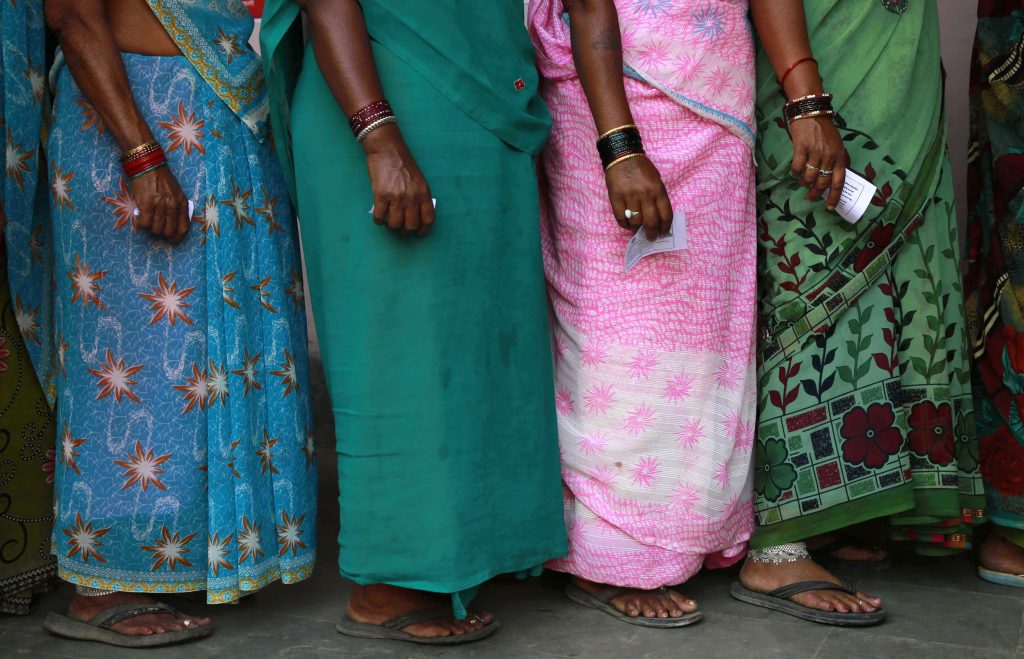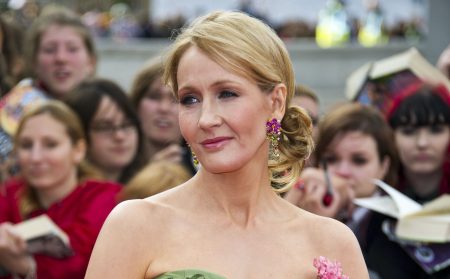By SHEIKH SAALIQ Associated Press
NEW DELHI (AP) — The world’s biggest democratic election might also be one of its most important.
With a population of over 1.4 billion people and nearly 970 million voters, India’s general election pits Prime Minister Narendra Modi, an outspoken Hindu nationalist, against a broad alliance of opposition parties that are struggling to catch up.
The 73-year-old Modi first came to power in 2014 on promises of economic progress, presenting himself as an outsider cracking down on corruption. Since then, he has combined religion with politics in a strategy that has attracted wide support from the country’s majority Hindu population.
India under Modi is a growing global power, but his rule has also seen increasing unemployment, attacks by Hindu nationalists against minorities, particularly Muslims, and a decrease in space for dissent and free media.
-
Bharatiya Janata Party (BJP) supporters wear masks of Indian Prime Minister Narendra Modi during an election rally addressed by Modi in Meerut, India, Sunday, March 31, 2024. (AP Photo/Altaf Qadri)
-
FILE- Election officers carry Electronic Voting Machines (EVM) on board a ferry to cross the Sowansiri river to reach a polling center on the eve OF elections in Majuli, India, March 26, 2021. The 6-week-long general elections will begin on April 19, 2024, and results will be announced on June 4. While voters in the United States and elsewhere use paper ballots, India uses Electronic Voting Machines or EVMs. (AP Photo/Anupam Nath, File)
-
FILE- Workers use machinery at a coastal road project construction site in Mumbai, India, Aug. 26, 2021. With a population of over 1.4 billion people and close to 970 million voters, India’s 2024 general election pits Prime Minister Narendra Modi, an avowed Hindu nationalist, against a broad alliance of opposition parties that are struggling to play catch up. India's large economy is among the fastest growing in the world. The UNDP’s latest Asia-Pacific Human Development Report says that India has emerged among the top countries with high income and wealth inequality. (AP Photo/Rafiq Maqbool, File)
-
FILE- Indians crowd ticket counters at the railway station in Ahmadabad, India, Oct. 23, 2011. With a population of over 1.4 billion people and close to 970 million voters, India’s general election that begins April 19, 2024, pits Prime Minister Narendra Modi, an avowed Hindu nationalist, against a broad alliance of opposition parties that are struggling to play catch up. (AP Photo/Ajit Solanki, File)
-
FILE – In this Sunday, Nov. 25, 2018, photo, a man holds a brick reading "Jai Shree Ram" (Victory to Lord Ram) as bricks of the old Babri Mosque are piled up in Ayodhya, in the central Indian state of Uttar Pradesh. Most pre-poll surveys suggest Modi is likely to win the 2024 elections comfortably, especially after he opened a Hindu temple built on the ruins of the historic mosque in northern Ayodhya city in January, which fulfilled his party’s long-held Hindu nationalist pledge. (AP Photo/Bernat Armangue, File)
-
A photo shows newly elected lawmakers from India's ruling alliance, led by the Hindu nationalist Bharatiya Janata Party, raising their hands to support Narendra Modi being elected as their leader in New Delhi, India, on May 25, 2019. India's 6-week-long general elections begin on April 19, 2024, and results will be announced on June 4. The voters, who make up more than 10% of the world's population, will elect 543 members for the lower house of Parliament for a term of five years. (AP Photo/Manish Swarup, File)
-
A photo shows leaders from the opposition INDIA alliance sitting for a press briefing in Mumbai, India, on Friday, September 1, 2023. The opposition has united under a front called INDIA. The acronym, which stands for Indian National Developmental Inclusive Alliance, comprises India’s previously fractured opposition parties that are aiming to deny Modi a third straight win in the 2024 elections. (AP Photo/Rajanish Kakade, File)
-
Indian Prime Minister Narendra Modi speaks at an election campaign rally in Meerut, India, on Sunday, March 31, 2024. (AP Photo/Altaf Qadri)
Expand
HOW DOES THE ELECTION WORK?
The 6-week-long general election starts on April 19 and results will be announced on June 4. The voters, who comprise over 10% of the world’s population, will elect 543 members for the lower house of Parliament for a five-year term.
The polls will be held in seven phases and ballots cast at more than a million polling stations. Each phase will last a single day with several constituencies across multiple states voting that day. The staggered polling allows the government to deploy tens of thousands of troops to prevent violence and transport election officials and voting machines.
India has a first-past-the-post multiparty electoral system in which the candidate who receives the most votes wins. To secure a majority, a party or coalition must breach the mark of 272 seats.
While voters in the United States and elsewhere use paper ballots, India uses electronic voting machines.
WHO IS RUNNING?
Modi’s Bharatiya Janata Party and his main challenger, Rahul Gandhi of the Indian National Congress, represent Parliament’s two largest factions. Several other important regional parties are part of an opposition bloc.
Opposition parties, which have been previously fractured, have united under a front called INDIA, or Indian National Developmental Inclusive Alliance, to deny Modi a a third straight election victory.
The alliance has fielded a single primary candidate in most constituencies. But it has been roiled by ideological differences and personality clashes, and has not yet decided on its candidate for prime minister.
Most surveys suggest Modi is likely to win comfortably, especially after he opened a Hindu temple in northern Ayodhya city in January, which fulfilled his party’s long-held Hindu nationalist pledge.
Another victory would cement Modi as one of the country’s most popular and important leaders. It would follow a thumping win in 2019, when the BJP clinched an absolute majority by sweeping 303 parliamentary seats. The Congress party managed only 52 seats.
WHAT ARE THE BIG ISSUES?
For many years, India has strongly held onto its belief in democracy, mostly because of fair elections, an independent court system, a thriving media, a strong opposition, and peaceful changes in leadership. Some of these qualities have slowly weakened during Modi's 10-year leadership, and the elections are considered a test for the democratic values of the country.
Several observers now consider India to be a “hybrid regime” that is not fully a democracy or a full autocracy.
The elections will also assess the boundaries of Modi, a popular leader whose ascent has led to increasing attacks on religious minorities, especially Muslims. Critics claim he is promoting a pro-Hindu agenda, which puts the country’s non-religious foundations at risk.
Under Modi, the media, once seen as lively and mostly independent, have become more flexible and critical voices silenced.Courts have mostly complied with Modi’s desires and issued favorable decisions in important cases. The concentration of executive power has strained India’s federal structure. Federal agencies have become entangled in top opposition leaders in corruption cases, which these leaders deny.
Another significant issue is India’s expansive economy, which is one of the fastest growing globally. It has helped India become a global force and a balance to China. However, despite India’s significant growth by some measures, the Modi government has struggled to create enough jobs for young Indians and has instead relied on social welfare programs like free food and housing to attract voters.
The U.N.’s most recent Asia-Pacific Human Development Report includes India among the top countries with significant income and wealth inequality.









